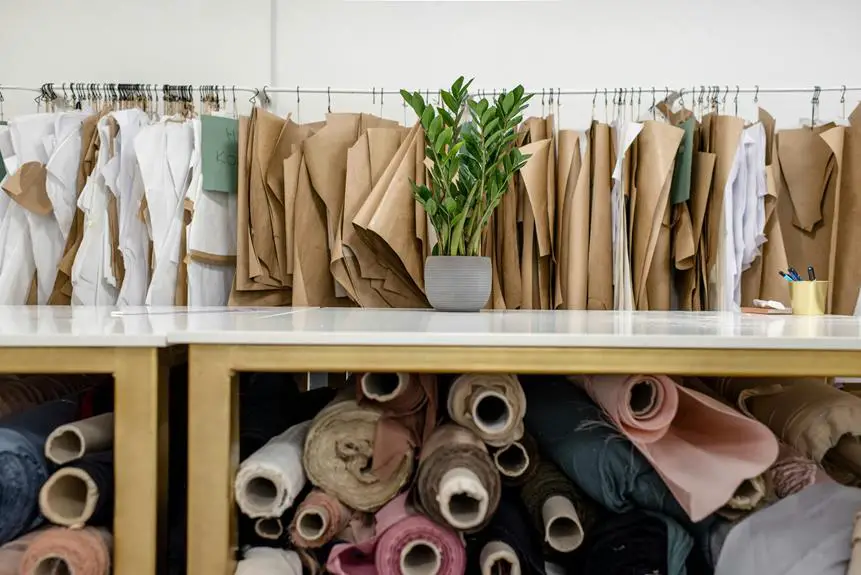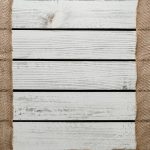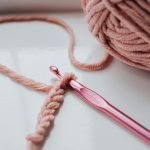You might be surprised to learn how cambric, once overshadowed by more popular fabrics, is carving out a niche in the textile industry. Its lightweight, breathable nature and eco-friendly attributes are appealing to a growing base of environmentally conscious consumers. Innovations in production are pushing cambric to the forefront of sustainable fashion. But as demand increases, several challenges could impact its future. What are these obstacles, and how might they shape the landscape of textiles in the coming years?
Table of Contents
History of Cambric Fabric
Cambric fabric, known for its fine texture and lightweight quality, has a rich history that dates back to the 16th century in Europe. Originating in Cambrai, France, this textile quickly gained popularity for its delicate weave and versatility. You might be surprised to learn that it was initially made from linen, but as demand grew, manufacturers began blending other fibers to enhance its durability.
By the 17th century, cambric became a luxury item, often used for fine shirts and dresses among the wealthy. The fabric's appeal lay not only in its softness but also in its ability to hold intricate embroidery, making it a favorite for artisans. As you explore its evolution, you'll find that cambric wasn't just a fashion statement; it played a significant role in the burgeoning textile trade.
The Industrial Revolution in the 18th and 19th centuries revolutionized cambric production, allowing for mass manufacturing. This increased availability made cambric accessible to a broader audience, solidifying its place in everyday fashion. Today, you can still find cambric in various applications, reflecting its enduring legacy in the textile industry.
Cambric's Sustainable Properties
When you consider cambric's sustainable properties, you'll find that eco-friendly manufacturing processes play a crucial role.
This fabric not only reduces environmental impact but also offers biodegradable options that align with your green lifestyle.
Exploring these aspects can help you make more informed choices in your textile selections.
Eco-friendly Manufacturing Processes
Sustainable practices in cambric production highlight its eco-friendly properties, making it a popular choice for environmentally conscious consumers. The manufacturing process typically utilizes natural fibers, which require fewer chemicals and pesticides compared to synthetic alternatives. When you choose cambric, you're supporting practices that reduce the environmental impact of textile production.
Moreover, many manufacturers are adopting water-saving techniques and energy-efficient machinery. These innovations minimize waste and lower carbon emissions, further enhancing cambric's appeal. You'll find that some brands are even implementing closed-loop systems, recycling water and materials to create a more sustainable cycle. This approach not only conserves resources but also reduces pollution.
Additionally, the dyeing process used in cambric production often employs low-impact dyes that are less harmful to the environment. By opting for these greener methods, producers contribute to cleaner water systems and healthier ecosystems.
As consumers, you play a vital role by supporting companies that prioritize eco-friendly practices in their cambric production.
Biodegradable Fabric Options
Explore the benefits of cambric as a biodegradable fabric option that aligns with eco-friendly practices. This soft, lightweight textile is made primarily from natural fibers, which means it breaks down more easily than synthetic alternatives. When you choose cambric, you're not just opting for comfort; you're making a choice that minimizes environmental impact.
Cambric's production process often uses fewer chemicals than other fabrics, further reducing its ecological footprint. Since it's biodegradable, when cambric garments reach the end of their life cycle, they decompose naturally without leaving harmful residues in landfills. This is a significant advantage in today's world, where sustainable solutions are increasingly vital.
Moreover, cambric is versatile, making it suitable for various applications, from clothing to home textiles. You can enjoy its benefits while knowing you're contributing to a more sustainable textile industry.
Innovations in Cambric Production
Recent advancements in technology have significantly transformed cambric production, enhancing both efficiency and quality. You'll find that today's production methods leverage automation and innovative machinery, streamlining processes while maintaining the fabric's delicate characteristics. These innovations not only improve output but also ensure a higher standard of quality control.
Here are some key innovations shaping cambric production:
- Digital Printing Technology: This allows for vibrant designs and detailed patterns, giving you more creativity in your fabric designs.
- Automated Weaving Machines: These machines optimize production speed and precision, reducing labor costs and minimizing human error.
Through these advancements, cambric producers can meet increasing consumer expectations while remaining competitive in the textile market.
You can expect to see even more innovations on the horizon, as the industry embraces technology to create better products.
This transformation not only benefits manufacturers but also enhances your experience as a consumer, offering you higher-quality cambric fabrics that align with modern values.
Market Trends and Demand
Current market trends show a rising demand for cambric fabrics, driven by consumer preferences for lightweight, breathable materials in both fashion and home textiles.
As you explore the textile market, you'll notice that cambric's soft texture and versatility are appealing to a wide range of customers. This fabric is increasingly favored for clothing items like shirts and blouses, where comfort is key.
Additionally, home decor items such as curtains and cushion covers are incorporating cambric, thanks to its elegant finish and easy maintenance. Retailers are responding to this trend by expanding their cambric product lines, making it more accessible to consumers.
You'll also find that the growth of online shopping has made it easier for you to find various cambric options, allowing you to compare prices and styles with just a few clicks.
Moreover, the rise of niche markets catering to specific demographics, such as eco-conscious buyers, has further fueled demand for cambric. As these trends continue, you can expect cambric to solidify its position as a staple in the textile industry, meeting the evolving needs of consumers around the globe.
Cambric in Sustainable Fashion
Cambric is becoming a popular choice in sustainable fashion due to its lightweight nature and ability to be produced from organic fibers. This versatility makes it perfect for a variety of garments, from casual wear to high-fashion items. As consumers become more eco-conscious, you'll find that brands are increasingly incorporating cambric into their collections.
Here are a few reasons why cambric stands out in sustainable fashion:
- Eco-friendly production: When sourced from organic cotton or linen, cambric minimizes the use of harmful chemicals and promotes sustainable farming practices.
- Durability: Despite its lightweight feel, cambric is strong and long-lasting, reducing the need for frequent replacements and contributing to a more sustainable wardrobe.
Challenges Facing Cambric Usage
Despite its advantages, several challenges hinder the widespread adoption of cambric in the textile industry. One major issue is the perception of cambric as a less durable fabric compared to alternatives like cotton or polyester. Consumers are often hesitant to invest in garments made from cambric, fearing they won't withstand regular wear and tear.
Additionally, the production process for cambric can be more intricate and time-consuming, leading to higher costs. This can deter manufacturers from embracing cambric, especially when they're competing with cheaper options. Sourcing quality cambric can also be a challenge, as not all suppliers maintain consistent standards.
Moreover, limited awareness of cambric's benefits can affect its marketability. Many consumers and even retailers may not fully understand its sustainable attributes, such as its biodegradable properties and low environmental impact. Addressing these knowledge gaps is crucial for those in the industry.
Lastly, the competition from synthetic fabrics, which are often more affordable and readily available, poses a significant challenge. Overcoming these hurdles is essential for cambric to gain the recognition it deserves in the textile market.
Future Prospects for Cambric
As you look ahead, consider how sustainable production techniques could reshape the cambric market.
You'll notice growing trends in consumer demand that prioritize eco-friendly materials.
These shifts could open up exciting opportunities for cambric in the textile industry.
Sustainable Production Techniques
In the quest for eco-friendly textiles, sustainable production techniques are becoming essential for the future of cambric. To meet growing environmental concerns, manufacturers are adopting practices that not only reduce waste but also ensure the longevity of resources.
You'll find that these methods enhance cambric's appeal while addressing consumer demand for sustainability.
Here are three key sustainable techniques transforming cambric production:
- Organic Sourcing: Using organic cotton and natural fibers minimizes chemical usage, promoting healthier ecosystems and reducing soil degradation.
- Water Conservation: Implementing advanced irrigation techniques and recycling wastewater helps conserve this precious resource, making production more sustainable.
Market Demand Trends
Market demand for cambric is rapidly evolving, driven by consumers' growing preference for lightweight, breathable fabrics that offer both comfort and style. As you explore the textile market, you'll notice that cambric is gaining traction due to its versatility. It's not just for traditional garments anymore; it's making its way into modern fashion, home textiles, and even activewear.
You'll find that sustainability plays a crucial role in this evolution. Shoppers are increasingly seeking fabrics that align with eco-friendly practices, and cambric, especially when produced sustainably, can meet those expectations. This shift is pushing manufacturers to innovate and adopt sustainable sourcing and production methods.
Moreover, the rise of e-commerce has changed how consumers shop for textiles. With access to a wider variety of products, you're more likely to encounter cambric in various collections, enhancing its visibility and desirability.
Frequently Asked Questions
What Is the Origin of the Name "Cambric"?
The name 'cambric' originates from Cambrai, a city in northern France. You'll find that this fine linen fabric was originally produced there, gaining popularity in Europe during the 16th century for its delicate texture and quality.
How Does Cambric Compare to Other Fabrics?
Cambric's lightweight and fine texture set it apart from thicker fabrics. You'll find it smoother than cotton yet less stretchy than jersey. It's ideal for delicate garments, giving you a refined look and feel.
Can Cambric Be Used for Home Decor?
Yes, you can use cambric for home decor! Its smooth texture and lightweight nature make it perfect for curtains, cushions, and table linens. Plus, it adds a touch of elegance to any room's aesthetic.
Is Cambric Suitable for Sensitive Skin?
If you have sensitive skin, you'll appreciate that cambric's lightweight, breathable nature often makes it suitable. However, always test a small patch first to ensure you don't have any adverse reactions. Your comfort matters!
What Care Instructions Should Be Followed for Cambric?
To care for cambric, wash it in cold water with a gentle detergent, avoid bleach, and tumble dry on low. Iron on a low setting if needed, and always check for specific care labels.
- How Does Ring Spun Cotton Affect Garment Fit and Shape Retention? - August 13, 2024
- What Are the Challenges in Producing Ring Spun Cotton? - August 13, 2024
- Is Ring Spun Cotton Suitable for Plus-Size Clothing? - August 13, 2024







